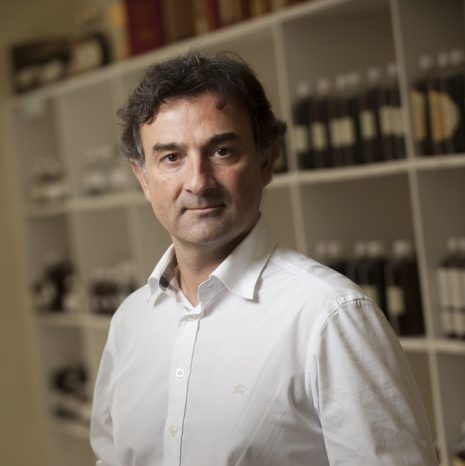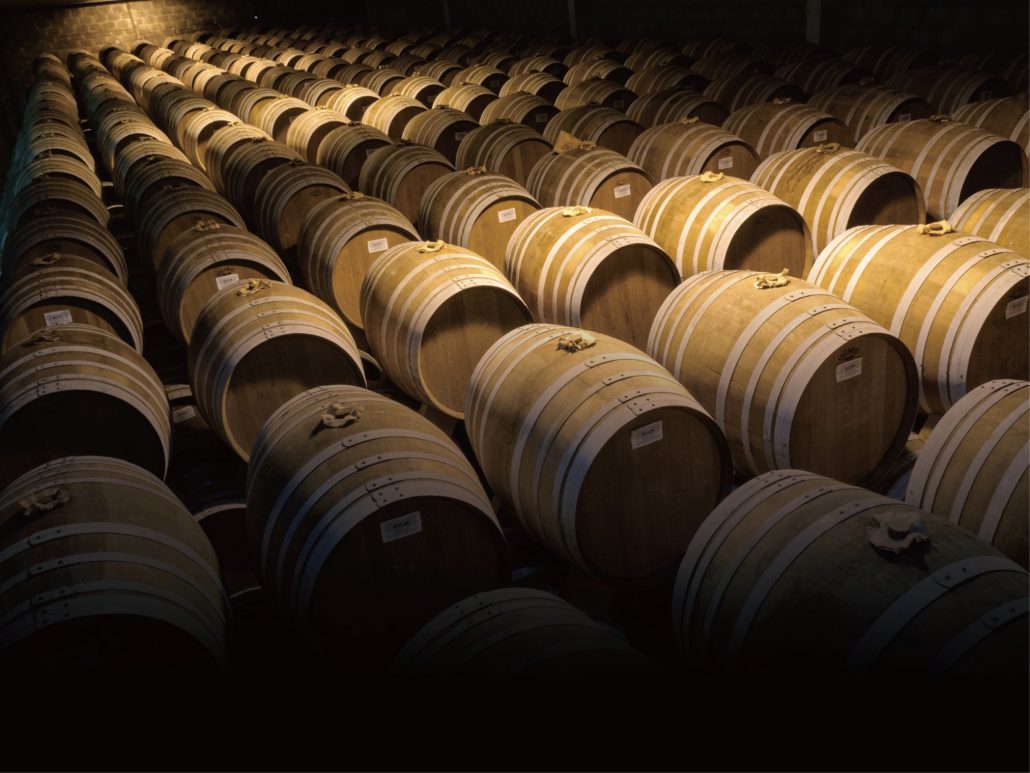A chat with Jérôme Tessendier
Ever wondered what it’s like to be an owner and Master Blender of a Cognac distillery? Whiskygeeks got to interview the CEO and Master Blender of Distillerie Tessendier et Fils (Tessendier & Sons Distillery) that makes Cognac Park! Cognac Park is from a smaller sub-region of Cognac called the Borderies, and known for their Mizunara matured Cognac. His reply has also been edited for clarity. Let’s dive straight into the interview!

For people who aren’t familiar with Cognac Park, could you introduce yourself and how you started Cognac Park with Mr Dominic Park back in 1993?
I’m Jérôme Tessendier, born and grew up in Cognac; a pure “production” from Cognac! I have been working in the family business since 1992 and my passion is to create beautiful blends of Cognac. I met Dominic Park in 1993, he had already purchased small batches of cognac from a middle man and wanted to meet the distillery and the makers behind it. We were the source and after our first meeting, the chemistry was instant. Our goals aligned and we decided to cooperate. I created his first range of cognac from VS to XO Grande Champagne.
Growing up in a family of Cognac producers must have been really unique, what are some memories you have with Cognac growing up as a child?
I didn’t realise that this is a unique position because I was used to it. One of my first memories was hearing my parents talk over dinner about their day of distillation, then was this very particular smell in the distillery, this special atmosphere while it was cold outside and warm in the distillery.
Do you remember the first time you tried Cognac?
When I was 14, I played tennis tournaments, and some prizes would be miniature bottles of Cognac. So my best friend and I were in our room. And I brought some orange juice and mixed it with Cognac. So we did it in increments with 90% orange juice and 10% cognac, then 80% orange juice and 20% Cognac, until we were drinking Cognac neat. I felt ill the next day.
What does a typical day consist of as the CEO and master blender of Cognac Park?
The mornings start mostly with the questions and problems of production. Then start the tastings: approvals of blends, quality before bottling or shipping. Afterwards comes creating primarily blends with trial and error. The afternoon and evening are reserved for management, commercial and other company-related tasks.
How has COVID impacted the Cognac Industry and how is it coping with in this new COVID era?
During the first lockdown, of course, it has impacted because a part of employees couldn’t come to work. But after several weeks it returned to a tough but stable situation. Now we see that people still buy cognac in liquors stores instead of bars and restaurant as they are closed.
Is the practice of petites eaux (the practice of reducing Cognac with Cognac diluted with water rather than pure water) done in Cognac Park? If so, what advantages does it give?
The “faibles” or “petites eaux” is a practice that helps to reduce the alcohol content. It has to be done very carefully. On the one hand, it helps to give some roundness. On the other hand, it might reduce the aftertaste and make the blend a little flat. Therefore, it’s a practice that has to be done with a lot of care.
Could you talk about chill filtration in Cognac in general, and the extent of chill-filtration in Cognac Park (Distillerie Tessendier et Fils)?
Chill filtration became standard practice to ensure the long-term stability and clear appearance of the Cognac. The process chills the cognac at -5°C for 4 to 5 days before filtering. (With temperatures around -3°C at the exit of the filter). But of course, chill-filtering reduces the aromas of the Cognac. The key is to have a stable cognac before filtration, then the lightest one the after. We decided, first to control the stability of the cognacs before making a decision on whether chill-filtration is necessary. And for some of our cognacs, we prioritise the aromas by not chill filtrating, like the Mizunara range.
What are the defining qualities of eau-de-vie that deem the cask ready to transfer into Mizunara casks?
Cognac has to be delicate, straight, with depth, and very pure. It has to achieve a level of maturity before being over-oxidised to let the flavour profile of mizunara “wrap” the eaux de vie. That is the general philosophy.
Mizunara casks are known to be very leaky. Do the makers at Cognac Park find it to be true? If so, how do you deal with this leaky problem?
It was ok. Only one cask so far had this issue but it was on the top of the barrel so we didn’t face any lost of cognac, fortunately!

In Chichibu, they used a hybrid cask with American White Oak staves and Mizunara heads. This achieves the best of both worlds: Flavour from the Mizunara, whilst reducing the leakage. Is there any possibility of a hybrid cask of Limousin oak and Mizunara oak?
Our current practice is not to get a hybrid cask but to have a double maturation or a finishing. The using a hybrid cask is still being researched now but we are not ready to announce anything… yet.
Post Interview Commentary
This was a really enlightening interview. I also appreciated how transparent Jérôme was with chill-filtration and when it is necessary and when it is not. I was particularly interested in the practice of faibles or petites eaux because it’s such a foreign concept to me as a whisky drinker. He later explained in a zoom tasting that the staves of the mizunara casks he orders are much thicker, which explains why the Mizunara casks at Distillerie Tessendier et Fils are so sturdy and less prone to leaks!
We would like to thank Jérôme Tessendier for taking time out of his busy schedule to enlighten us about what goes on behind the scenes at Distillerie Tessendier et Fils and Distillerie Tessendier et Fils for the photos!
